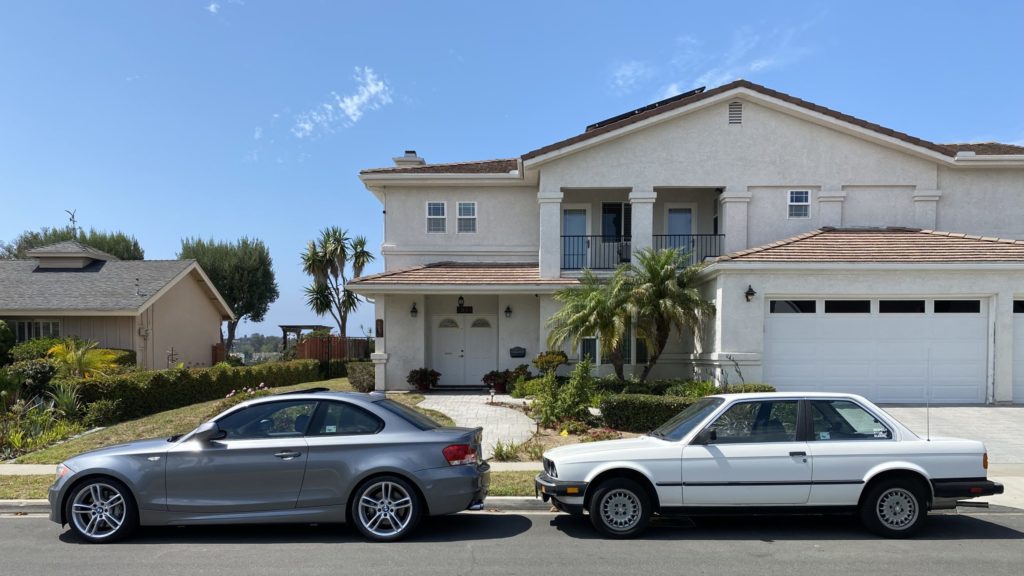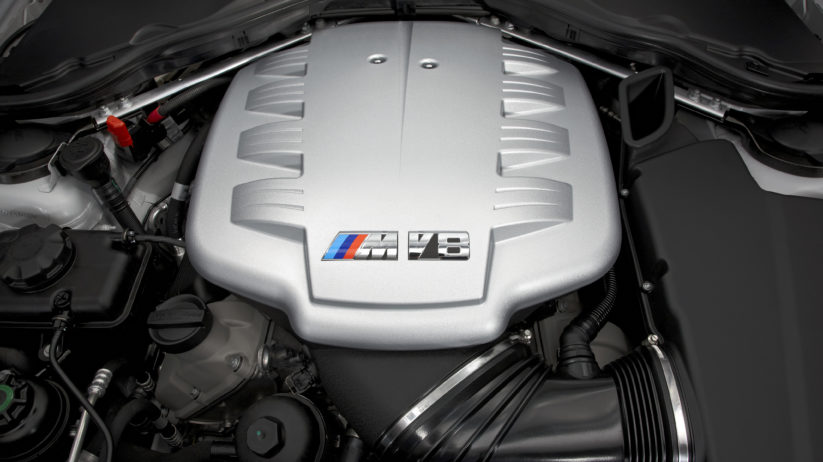It’s hard to believe that we’re approaching a full decade since BMW sold its last naturally-aspirated inline six in the U.S. That engine was the N52, and when it signed off after the 2013 model year, it largely marked the end of the naturally-aspirated era for BMW—that same year, production of the incredible S65B40 V8 concluded as well. Today, every BMW automobile engine is turbocharged, and with the exception of the N63 and S63 V8s (the oldest of the family), they all use modular construction as well.
I’ve been the proud owner of a vehicle with a turbocharged BMW inline six for over six years now, something I never thought I would actually embrace. Nevertheless, I’ve come to genuinely appreciate the N55, and how in 2009 it came with technology that many new engines continue to lack today: a twin-scroll turbocharger, reliable direct injection, VANOS, and Valvetronic.
I also drive a car powered by one of BMW’s all-time greats, the M20, which still embodies everything one looks for in a BMW inline six (rubber-band cam drive notwithstanding).

However, even with two great BMWs that represent opposite ends of the spectrum—old and new, rough and refined, fast and slow, et cetera—I find myself pining for something that the brand doesn’t even offer anymore: a naturally aspirated V8.
Can you fault me for it? Although BMW developed five different V8 engines over twenty years, at times it seems like the company actively resisted making one, waiting until 1992 to introduce the first modern dual-overhead-cam design with the M60. It’s safe to say that things reached their apex with the M-built S62 and S65 V8s of the E39 M5 and the E9X M3, but these engines are now ancient, technologically speaking, and they aren’t exactly known for being particularly reliable. I know much of that reputation really depends on how dedicated you are to maintenance and prophylaxis, but it still weighs heavily on the mind, especially after being spoiled with cooperative engines.
There’s something to be said for the S54 engine as well. That one represents absolute pinnacle of the naturally aspirated BMW inline six—and perhaps the inline-six engine, period. I’ve always wanted to own something with one of these as well, and after spending a few thousand miles behind the wheel of a Z4 M roadster, the desire only grew. And knowing that BMW applied the same design ethos to the S62 V8 and S85 V10—and subsequently the S65 V8—makes these more exotic engines all the more desirable.

I knew that these engines were exceptional when they were brand-new and found on dealership lots, but something about the era of turbocharging and direct injection has been a catalyst for renewed interest. There’s also the reality that electrification is on the immediate horizon, and brands like Mercedes-Benz are dropping their V8s, while Audi is moving away from internal combustion entirely.
Speaking of Audi, I’ve actually gone down the path of owning a European V8 before, but it didn’t go particularly well. The car was a 2005 Audi S4 six-speed in ideal spec (silver on black, carbon-fiber interior trim, standard Recaro seats all around), purchased from the original owner—but none of that mattered. The engine had stretched timing chains, worn timing parts, and scored cylinder walls. The 40-valve V8 was effectively a paperweight that consumed more than two quarts of oil for every 1,000 miles driven, and those behind you could smell it (and see the faint blue smoke) whenever you opened the throttle. The S4 ended up getting a replacement long block, but then the crankshaft-driven air-conditioning compressor gave out, and it broke me in the process. I took a loss and traded the car for a Techno Violet E36 M3 that was integral in helping to launch my writing career.

Now, with the benefit of several years to heal the wounds, and with my eyes fixed firmly on the horizon as I consider my next car, I’m once again contemplating wading into V8 waters. It might be my last chance to own one before they either become unattainable or completely impractical for a variety of reasons, and I don’t want to miss out on the experience.
The problem is that BMW doesn’t currently make anything I really want.
I’ve been pretty dead-set on an M2 and M4 for a few years now, but after having owned an N55-powered 1 Series, I should really upgrade to the S55, and while I want an M4 in Silverstone Metallic, an M2 Competition is more desirable to me. Lately, however, none of those has really been tickling my fancy when weighed against getting something with a V8, even if the car might actually be slower than what I’ve owned for years.
An E90-generation M3, whether in two- or four-door form, seems like the natural choice, but I’ve never really been crazy about their styling, aside from the flared fenders, I don’t want to go backwards or sideways in terms of technology, and although they’ve appreciated in terms of value over the past year or so, their maintenance requirements remain the same.
There’s something to be said for the N63 and S63 V8s as well, and even with their troubled reputation, I’m not particularly afraid of a later example. BMW clearly set a trend by putting the turbochargers and exhaust manifold between the cylinder banks, with Mercedes-AMG, Audi, and Cadillac eventually following suit, and new technology is almost always accompanied by a new set of problems. My problem is that as exceptionally capable as these engines are, they don’t have what I’m really looking for: the irreplaceable personality of a naturally-aspirated engine.

In the meantime (perhaps this is part of the problem to begin with), my third car and daily driver has become a a late-model Lexus LS400 with the legendary 1UZ-FE V8—you know, the one with the unmatched reputation for reliability and longevity. The 1UZ in my LS400 is the best of the breed: It has VVT-i variable valve timing and the highest compression ratio of the family, and it’s still more than adequate in terms of power two decades later. Although it uses a timing belt, the 1UZ-FE actually has a bit in common with the S65B40: Both engines displace four liters, and both are oversquare in terms of their bore and stroke, but the BMW engine is obviously more so, which is part of why it can rev to 8,400 rpm. The Lexus engine also loves to rev, which is a bit antithetical to its relaxed gearing and near 3,800-pound curb weight, but it it still begs to be wrung out over an on-ramp, and the five-speed automatic is happy to shift at redline. Rather noteworthy is the fact that the 1UZ makes slightly more torque per liter than the S65: 77.5 pound-feet in the GS400 and 75 in the LS400, as opposed to 73.5 pound-feet for the S65 in the M3.

The Lexus engine has spoiled me. It almost seems as if you don’t have to maintain it if you don’t want to, and the car it’s in makes for a great daily driver that doesn’t rattle my teeth like my 135i with its Bilstein suspension.
Often, however, when I’m driving (very often) or working on (very rare) the Lexus, I find myself thinking about how I could get this engine in a BMW. I’m not talking about swapping it into something like my E30, although that would certainly be cool; I want something new, but naturally aspirated, and as I explained at the beginning of this column, BMW doesn’t make a car like that anymore. There’s just one automaker left that still offers what I’m looking for, and it’s Lexus.
The engine is the five-liter 2UR-GSE, and although it’s pretty old, having arrived in 2007 under the hood of the IS F, it looks like Lexus is going to give it a final send-off in the upcoming 2022 IS500 F Sport sedan. The engine also found its way into the GS F, the RC F, and the LC 500, but there’s something about having it in a small four-door sport sedan.
Of course, it goes without saying that nothing Lexus makes can hold a candle to the direct connection to the road for which BMW used to be known, something that initially attracted me to the brand that’s also essentially vanished from the lineup. Current Lexus design language is another item of note; I don’t really care for it, but it’s not as bad as the iX, either.

But given the current market, I can see only one practical thing to do: wait, let some of my current cars appreciate a bit more (two already have over the past year), see what happens when the IS500 comes out, and enjoy what I’ve already got.
After all, they’re fully paid off.—Alex Tock
[Photos courtesy Alex Tock, Audi AG, BMW AG, Toyota Motor Sales, U.S.A., Inc.]





















